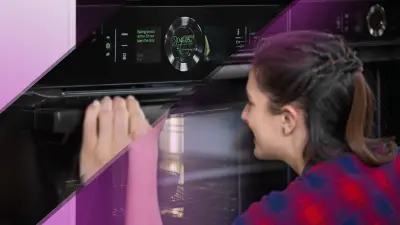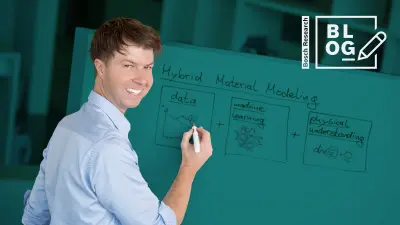Newton plus Kepler equals powerful AI

2021-05-07
The combination of theoretical physics and digital data will boost the development of artificial intelligence. This is a huge opportunity for European industry.
by Dr. Volkmar Denner
The road to Europe’s future goes back centuries. Surprisingly, it is not only politically and culturally that reflecting on our history can be rewarding, but technologically as well. Right now, anyone whose gaze is fixed solely on the present may easily lose heart. The old adage of Europe’s inferiority is not something that only came into being with Covid-19. In this context, there is often talk of “old Europe.” We are said to be too slow, far too perfectionist, and frequently too skeptical. Good enough to invent a vaccine, but not agile enough to distribute it as fast as others.
This inferiority complex is especially evident when talk turns to new technologies such as artificial intelligence. We believe that Silicon Valley is capable of practically any innovation, yet at the same time fear for Europe’s digital sovereignty. Of course, it is right to say that Europe must not become technologically dependent, and that it needs things such as its own data platforms. But sovereignty cannot be had without self-assurance. In the case of artificial intelligence, European industry could do worse than reflect on the synthesis of two European intellectual giants – Newton and Kepler.
A brief journey into the history of physics
Calling as it does for a digression into 16th and 17th century physics, this would seem a bold assertion. Surely our subject is the innovation of the 21st century? But this assertion has its justification. On the one hand, we have Isaac Newton, who described the fundamental laws of mechanics. Force equals mass times acceleration is his best-known axiom. In today’s parlance, we would say that Newton modeled the world. On the other hand, we have Johannes Kepler, who compiled astronomical observations over a 20-year period. These allowed him to conclude that the planets travel around the sun in ellipses. We could say that Kepler, who incidentally was born near Stuttgart, brought big data into astronomy.
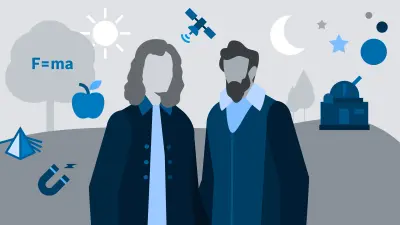
The systematic combination of these two approaches — physical models and data — is becoming more and more essential. Half a century ago, it was this combination that made the accuracy of the moon landing possible — the Kalman filter helped Apollo 11 to navigate 400,000 kilometers to within an accuracy of 500 meters. And it is exactly in this way that we can make cars, home appliances, and machinery smarter: not just by collecting data, but also by contributing physical knowledge about things to the data set. This hybrid approach, the synthesis of Newton and Kepler, is the opportunity Europe’s industry can seize when developing artificial intelligence. Which brings us nicely back to the 21st century.
Europe’s journey into the 21st century world of AI
Even if (or precisely because) we are delineating a distinctively European approach to the world of artificial intelligence, we cannot close our eyes to the hard economic facts. We have to admit that by far the heaviest investments in this sphere are being made in the United States and China. Quantitatively, Europe appears to be an also-ran. But this is all the more reason not to neglect a qualitative difference. While the major U.S. IT companies earn most of their money with data-based services, European companies have the opportunity to be global leaders with industrial AI applications. It is above all here that they can play to their strengths — both the manufacture of complex physical products and the evaluation of machine and product data.
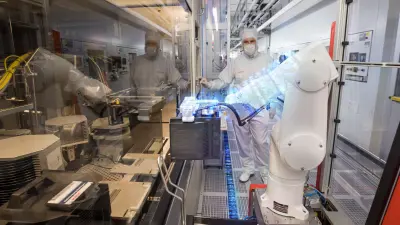
“It is precisely this domain knowledge that Bosch can combine with IoT and AI expertise.”
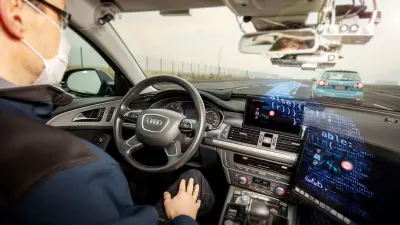
And not least, companies such as Bosch can contribute multifaceted industry and product expertise, in cars just as much as in buildings and factories. It is precisely this domain knowledge that they can combine with IoT and AI expertise. This hybrid approach provides a perfect base from which to make automated driving safe and robust in the future, for example. The question is: how can AI models be trained for the infinite eventualities of road traffic? Preparing them for each eventuality with millions upon millions of data points would be far too time-consuming. This is where development can be given a helping hand — by complementing the evaluation of data with knowledge of things or, to put it more concretely, with automotive systems expertise. The automotive industry can also make use of “Newton plus Kepler” to help it progress.
Making road traffic cleaner – with AI
Even a car’s emissions behavior, which is now tested on the road instead of at the test bench, cannot be efficiently analyzed on the basis of data alone. After all, there is more than one ideal test route. In fact, driving operation and environmental conditions vary enormously. Here again, we find ourselves confronted with the endless possibilities of the real world, and it is hardly feasible to drive around the world to make sure all the adjustments an exhaust system requires are actually made. This is why we at Bosch are following in Kepler’s footsteps, and using field observations to derive a statistical analysis of driving behavior.
And true to the spirit of Newton, these statistics are the basis for a model of real driving – a model created with the help of artificial intelligence. They are also the basis for a virtual test environment that contains all the essential components, from interventions by the driver to engine, control-unit, and exhaust gas-treatment parameters. Much faster than before, these parameters can now be changed according to road and environment conditions. Indeed, our AI-based solution allows us to simulate 1,000 real driving hours in just one hour. In this way, the hybrid development of artificial intelligence is helping minimize road-traffic emissions.
1,000 real driving hours
Einstein can also help make AI modeling smarter
Progress toward carbon-neutral mobility is also benefiting from this mixture of theoretical physics and data analysis. In fuel-cell systems, for example, the aim is to significantly reduce the use of precious metals by replacing them with new yet robust catalysts. With the help of quantum computers, it will in the future be possible to simulate such materials all the way down to their atomic structure. Fundamentally, a simulation such as this would also be possible with conventional computers, but by adding artificial intelligence to the equation, it can be done a thousand times faster. Here as well, the underlying AI model is not generated solely by means of machine learning, but also with the help of theoretical physics. This time, the theory comes from quantum mechanics, and takes its lead not from Newton, but from Einstein and Schrödinger. The model itself becomes so intelligent that, with a nod to Kepler, it can be trained faster. In the quest for new catalyst materials, hybrid AI itself acts as a catalyst.
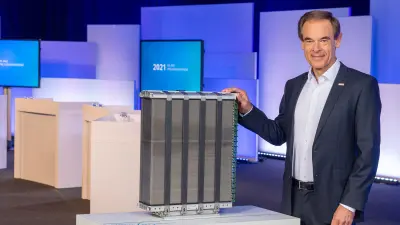
Knowledge of humble “things” is indispensable
At Bosch, there have been a number of examples of this new development approach for some time now. In clean-room wafer production, for example, it is crucial that the components be transported without mechanical abrasion. One possible solution is magnetic levitation of the carrier systems, just a few millimeters above the floor. This has given rise to closed-loop control technology with artificial intelligence — again a mixture of physics and data-driven models. Bosch already sees itself as an AIoT company, above all because the combination of artificial intelligence with the internet of things allows it to analyze huge volumes of machine and product data. And here again, the emphasis is on the humble “things.” Without knowledge of them, everything is in vain.
First published in Handelsblatt on 2021/05/07
